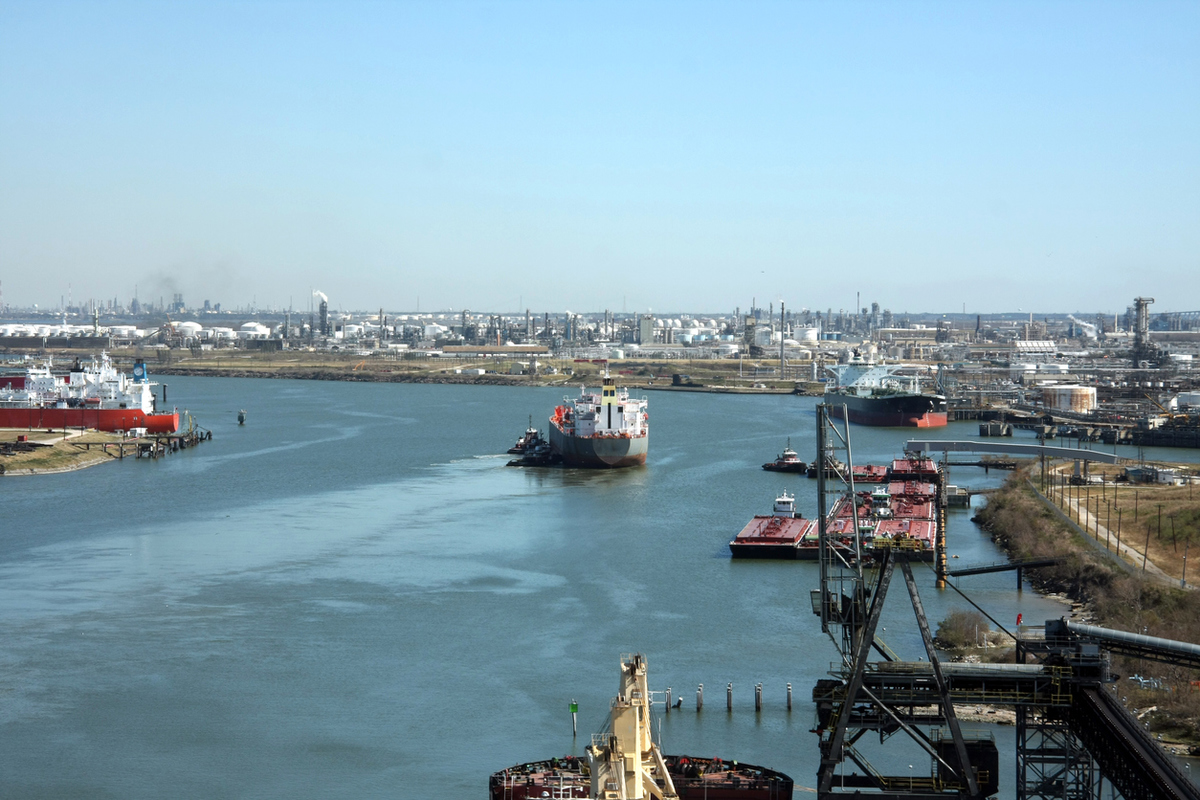US unveils roadmap for maritime transport decarbonisation
The US government has laid down its road map - the U.S. National Blueprint for Transportation Decarbonization - to facilitate and accelerate efforts to decarbonise its transportation sector, which includes maritime transport, by 2050.
 PHOTO: A view of the Houston Ship Channel with barges, loading docks and industrial plants in the background. Getty Images
PHOTO: A view of the Houston Ship Channel with barges, loading docks and industrial plants in the background. Getty Images
The decarbonisation-focused blueprint has been developed by the departments of Energy, Transportation, Housing and Urban Development, and the Environmental Protection Agency (EPA).
According to the blueprint, maritime transport accounts for 3% of total transport emissions in the US. In the maritime transport sector, international shipping makes up almost half of the sector’s emissions, followed by domestic shipping (almost 30%) and recreational boats (the remaining 20%), as per EPA's estimates.
Taking cognisance of the scenario, the report notes that “the maritime industry is international in scope,” and thus “will require intergovernmental collaboration that aligns with industry and community needs.” It further adds that "understanding the costs, standards, and requirements is critical for long-term investment planning” in this sector as “vessels have a long fleet turnover time.”
The blueprint advocates “innovative practices, targeted regulations, and a strong and immediate commitment to innovation and deployment of new and emerging technologies” to attain decarbonisation of the sector by 2050.
Keynotes and goals
Ensuring that 5% of the global deep-sea fleet utilises zero-emission fuels by 2030, and 10 trade ports across at least three continents can provide these fuels in the time frame is a key goal in the road map.
The blueprint advocates supporting the US domestic maritime sector in exploring and developing sustainable fuels and technologies while incentivising vessel owners to take decarbonisation initiatives.
It also recommends that the maritime sector work closely with countries that are members of the International Maritime Organization (IMO) in order to speed up decarbonisation.
The way forward
The blueprint prioritizes the exploration and adoption of “promising fuels and technologies that can support maritime decarbonization,” which include:
- Facilitating the usage of biofuels, biofuel blends, ammonia, hydrogen, and methanol as fuels, thus reducing the use of conventional fossil fuels that result in emissions.
- Accelerating electric powertrains and batteries in vessels, especially small boats, to cut emissions.
- Promoting the use of shore power at ports to facilitate cold-ironing of large vessels.
- Utilising technology to improve the operational efficiency of vessels can lead to substantial emission reductions.
- Encouraging the use of renewable energy to fuel or assist vessels.
- Treatment of vessel exhaust and use of carbon capture technology to reduce emissions.
The blueprint also stresses “coordination between the federal government and key outside stakeholders, such as vessel owner/operators, ports, terminal operators, and energy providers” in order “to develop and implement effective decarbonization strategies and regulation.”
Another priority under the road map is “infrastructure investments and improved design and planning in clean technologies and fuels” as “resources are necessary” to decarbonise the sector.
By Tuhin Roy
Please get in touch with comments or additional info to news@engine.online





